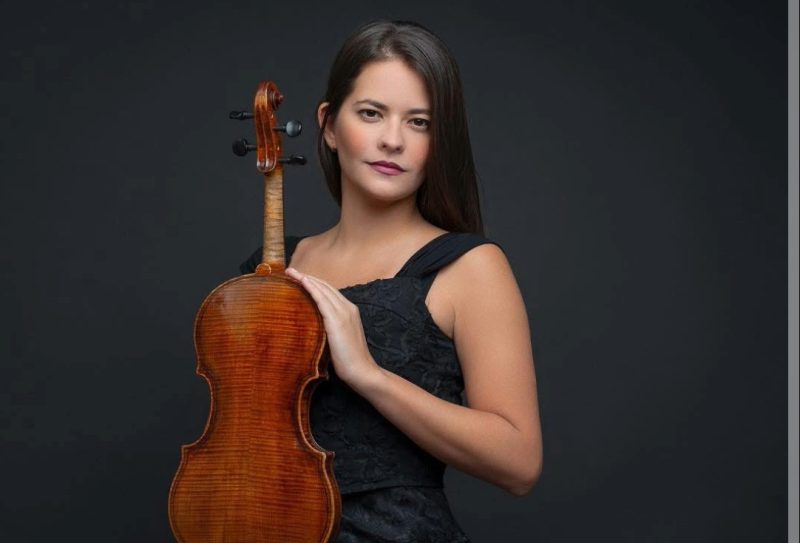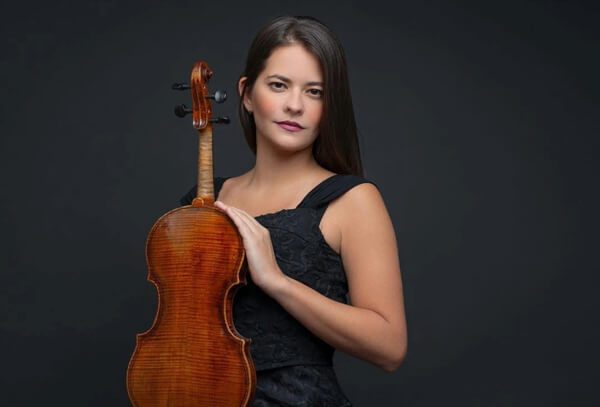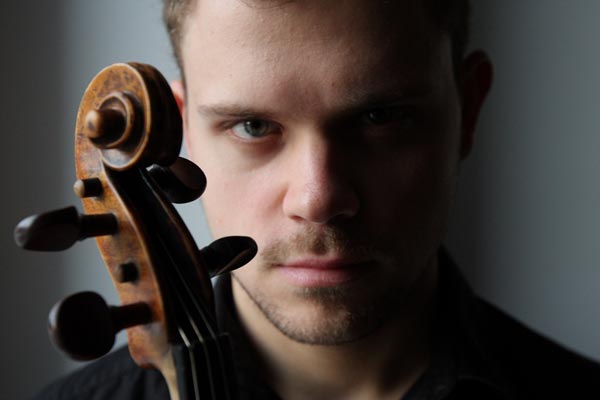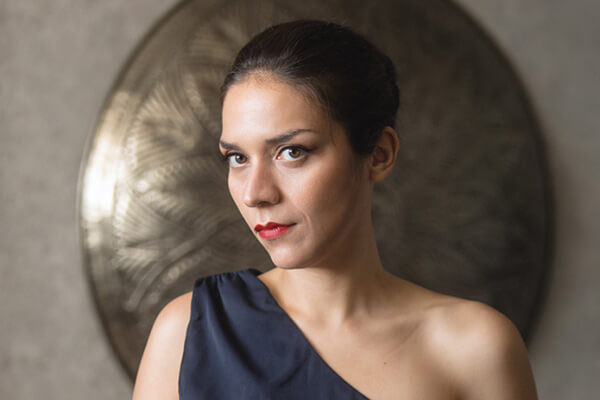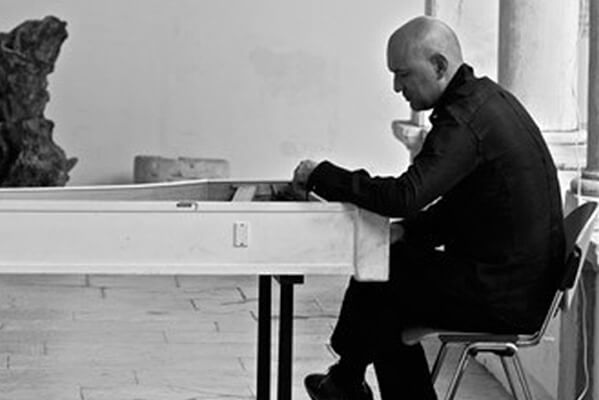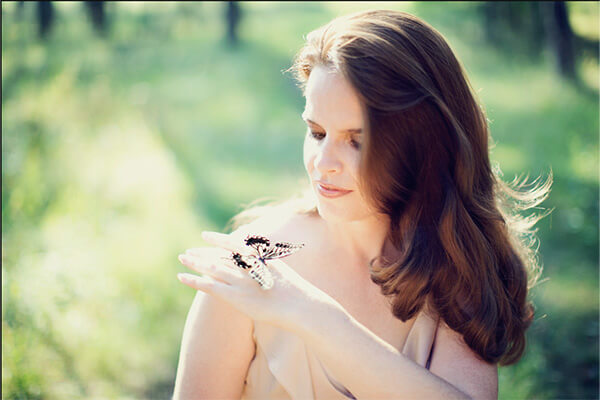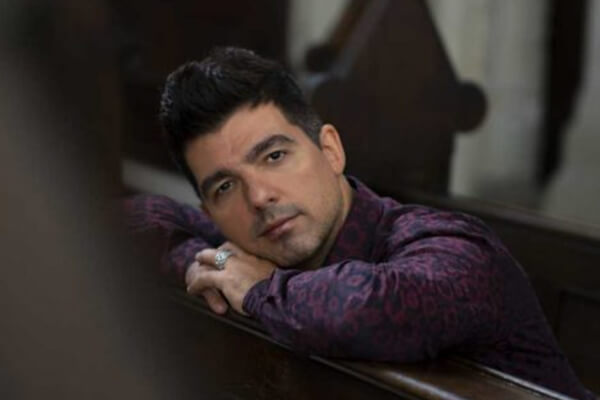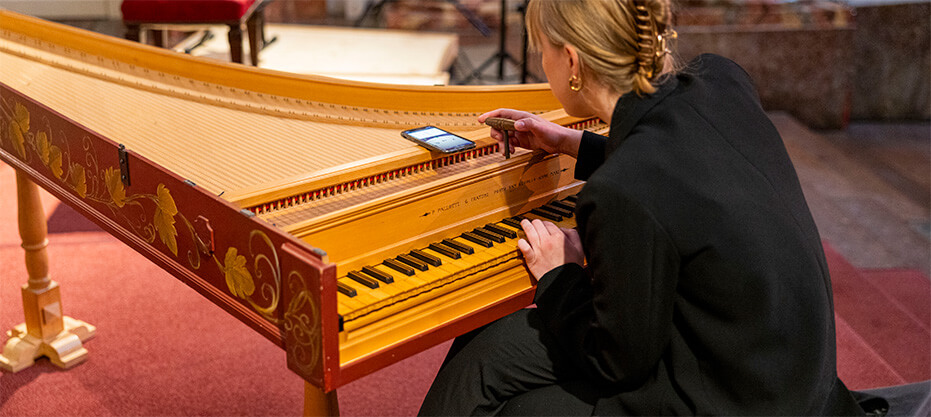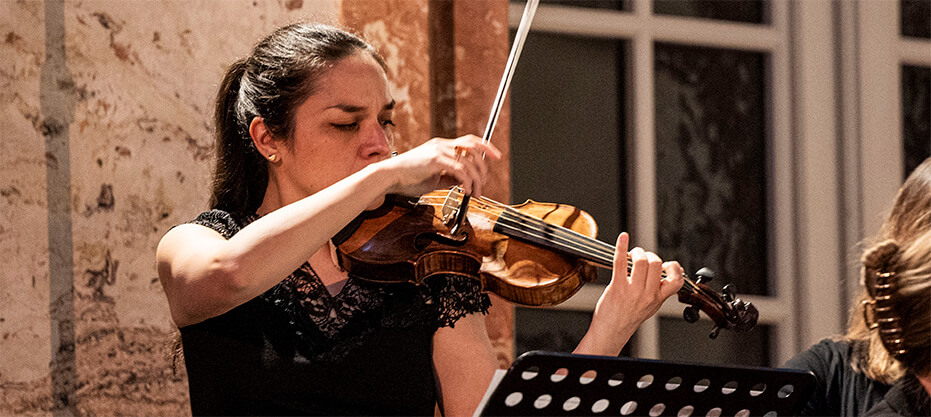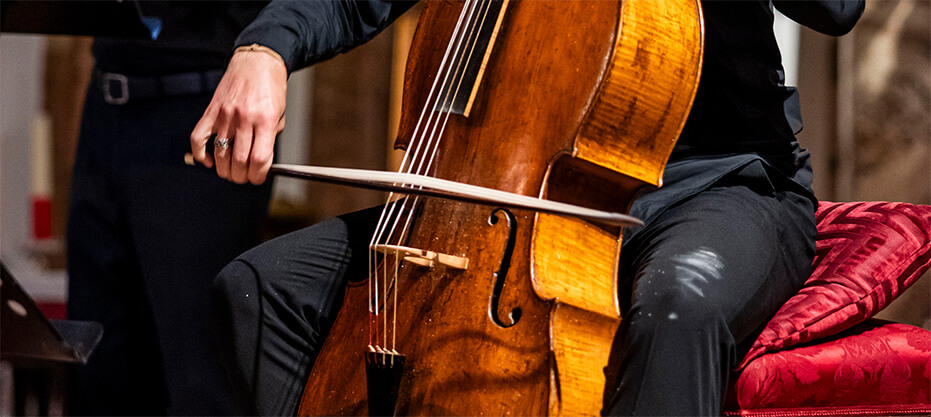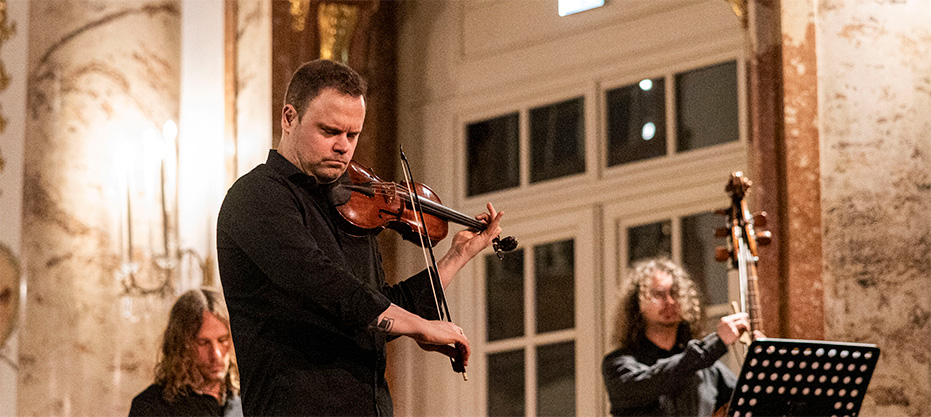Led by founder Konstantin Hiller and concertmaster Dimitris Karakantas, the following musicians bring Vivaldi’s Four Seasons to life night after night at Vienna’s St. Charles Church:

Musicians & Instruments
The People
Behind the Music
We all know it: the whole is always more than the sum of its parts. When everything aligns, when every element is in harmony, something greater emerges — that elusive magic. From the very first note, our musicians become one with the music — a finely tuned mechanism of harmony. Meet the people and instruments that bring Vivaldi’s masterpieces to life.
Our
Instruments
At our concerts, we perform exclusively on historical instruments. Only these allow us to produce an authentic sound that stays true to Vivaldi’s era. Typical of the Baroque period (ca. 1600–1750), these instruments have distinct characteristics that set them apart from their modern counterparts.
Historical Performance Practice with Original Instruments: A Closer Look at Vivaldi, String Instruments, and the Harpsichord
Historical performance practice is a fascinating field that explores how music from past eras was originally performed — often using period instruments or faithful reproductions. Especially in the Baroque period, a time known for its intricate soundscapes and distinctive instrumentation, original instruments play a crucial role.
A prime example of this approach is the music of Antonio Vivaldi, one of the most iconic composers of the Baroque era. A celebrated violinist and composer, Vivaldi wrote numerous concertos that place the violin center stage. Performing his works historically not only requires the use of Baroque violins, but also an understanding of the specific playing techniques of the time. Compared to modern violins, Baroque violins are lighter and produce a warmer, less brilliant tone — a quality that enhances the expressive, fast-paced passages so characteristic of Vivaldi’s music.
The harpsichord, commonly used as a continuo instrument in Baroque ensembles, also plays a central role in historical performance. Unlike the modern piano, the harpsichord produces a clearer, more immediate sound, which allows for crisp articulation and rhythmic precision. Together with the string instruments, the harpsichord forms the backbone of the basso continuo — an improvised bass line that provides harmonic structure to the ensemble.
Returning to historical instruments and performance practices allows us to hear Vivaldi’s music much as he himself might have heard it — with the instruments he composed for and the sound aesthetic of his time. This not only creates a richer listening experience but also offers deeper insight into the musical language and thinking of the Baroque era.
Book Your Concert Experience!
Want to experience the harmony and sound of our orchestra for yourself and immerse yourself in the world of Antonio Vivaldi? Then secure your ticket today for a truly unforgettable concert experience!


